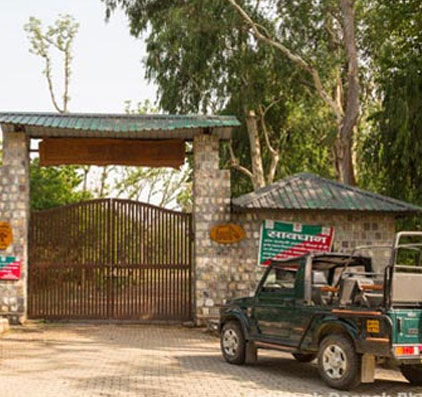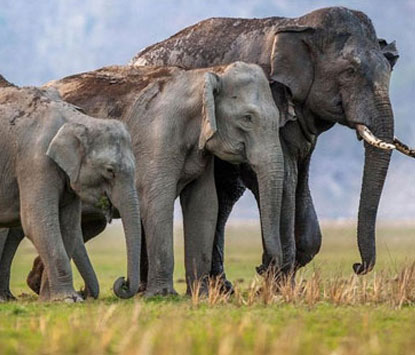Safari Zones of Rajaji National Park
Chilla Zone- Exploration of the Chilla Zone in Rajaji National Park offers visitors an eco-conscious adventure through a captivating jeep safari guided by local experts. Covering a distance of 36 km, this safari is renowned as the most sought-after excursion within the park. Along the route, adventurers can delve into the rich biodiversity of the region while admiring the stunning landscapes of Mundal, Mithawali, and Khara. The safari traces through dense sal forests and expansive Chaur plains, showcasing a harmonious blend of habitats. With a duration of approximately 2 and a half hours, the safari provides ample opportunities to witness the park's diverse wildlife, including Asian Elephants, Tigers, Leopards, Spotted deer, Sambhar, Langoor, Barking deer, and Jungle cats. Moreover, bird enthusiasts can rejoice in sightings of Pied and Great Hornbills, adding to the allure of this nature-filled experience. Along the way, visitors can also explore the Interpretation Centre-Cum-Library, enriching their understanding of the park's ecological significance.
Motichur Zone- Another renowned entry point to Rajaji National Park is the Motichur Safari Zone, attracting visitors with its remarkable Sal Forest. Spanning approximately 25 km, the safari route offers a mesmerizing journey through dense forest. The abundance of Sal trees provides a habitat for a diverse range of wildlife species, with elephants being a common sight in the Motichur area. As visitors traverse the forest through jeeps, they may also encounter Woodpeckers, Hornbills and Barbets relishing the resources of the forest and contributing to the area's vibrant biodiversity.


Jhilmil Zone- The Jhilmil Jheel Safari offers a unique and delightful experience, serving as the buffer zone of Rajaji National Park within the Haridwar Forest Division. Spanning approximately 30 km, this safari treats tourists to a scenic drive through a combination of forests and the serene waters of the Ganges River. Along the route, visitors encounter expansive Patera grasslands, which are frequented by Swamp Deer, Spotted Deer, Sambhar, and Wild Boar. The southern part of Chilla boasts a marshy grassland that serves as a conservation reserve for Swamp Deer. Jhilmil Lake is renowned for sightings of Leopard and Elephant, adding to the safari's allure. The area is also a haven for birdwatchers, from November to March offering prime opportunities to observe migratory birds alongside resident species.
Chillawali / Mohand Zone- The Chillawali Safari Zone is popularly known as the Mohand Range. This zone is located approx 20 km from Dehradun on the Delhi-Dehradun National Highway 72A. The track length of the Mohand Safari Zone stretches from 30 km - 36 km. The forested hills of this zone facilitate the sight of leopards, sambar deer, barking deer, Himalayan black bears, langurs, wild boar and many more. It is a significant region of Rajaji Tiger Reserve and also houses a variety of avian species, namely, Himalayan monal, grey partridge, black francolin, etc